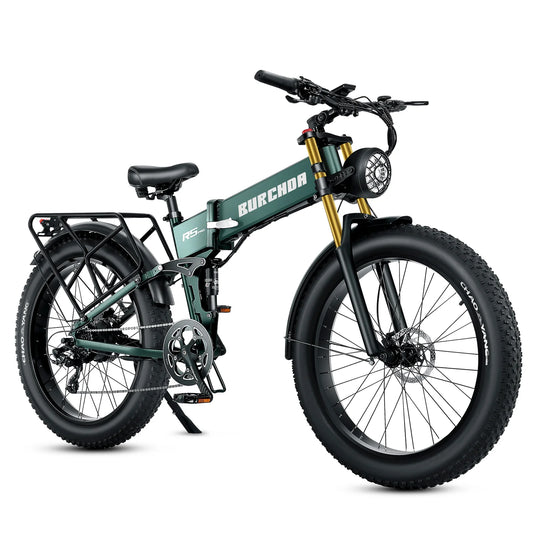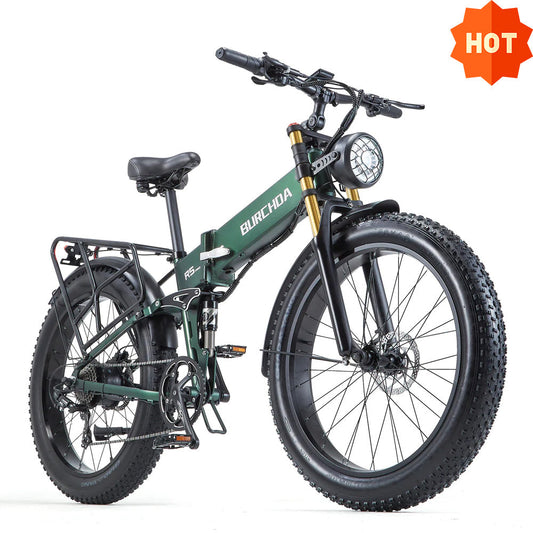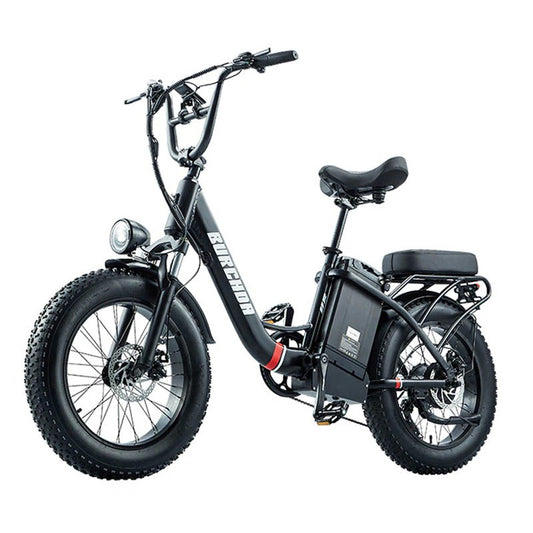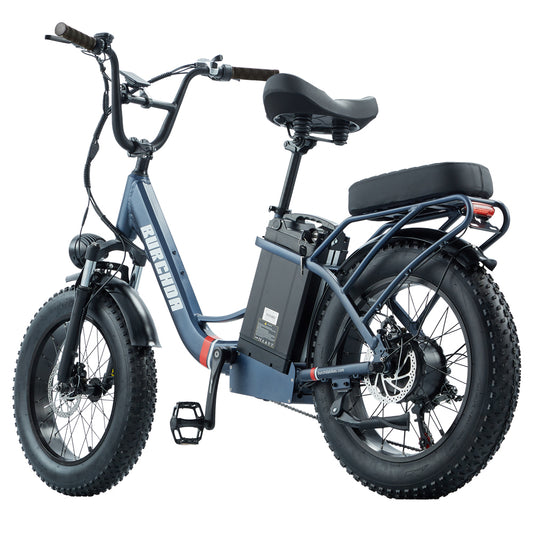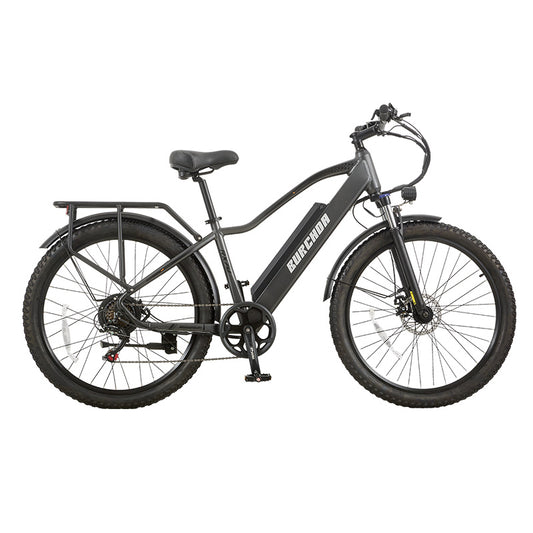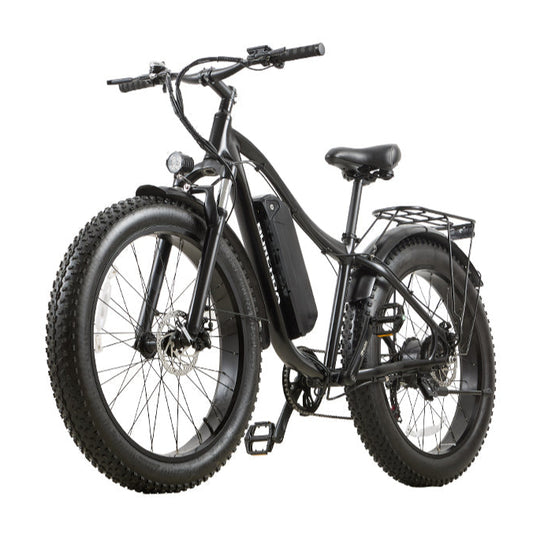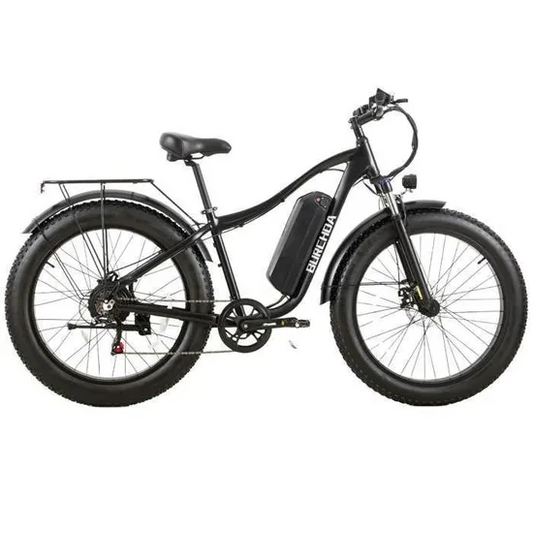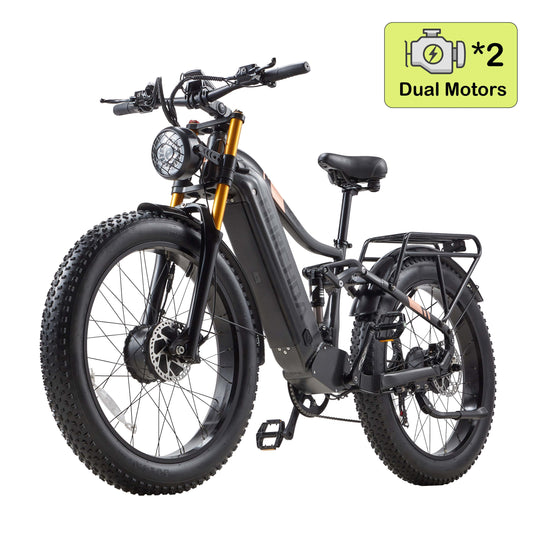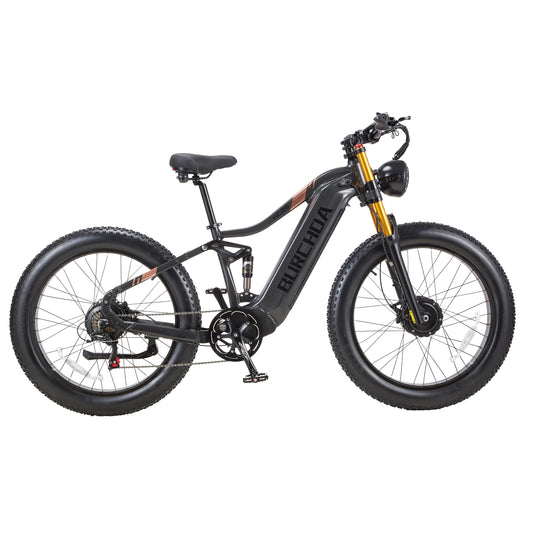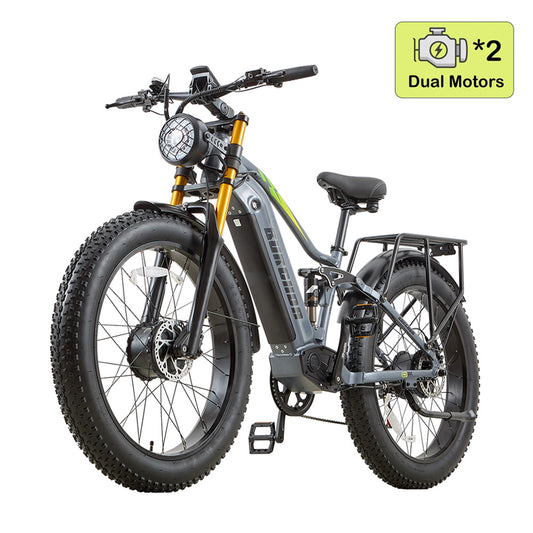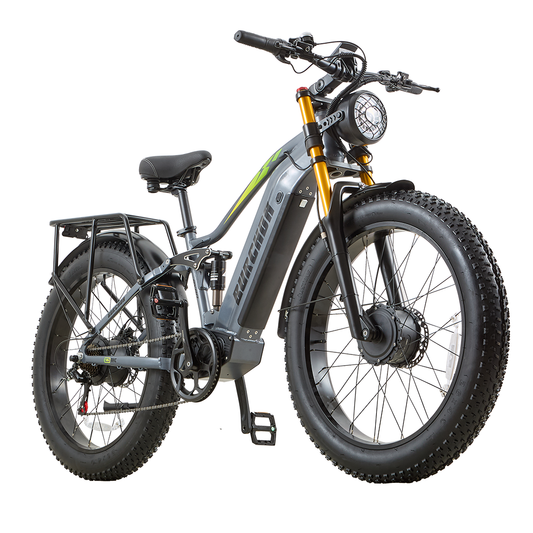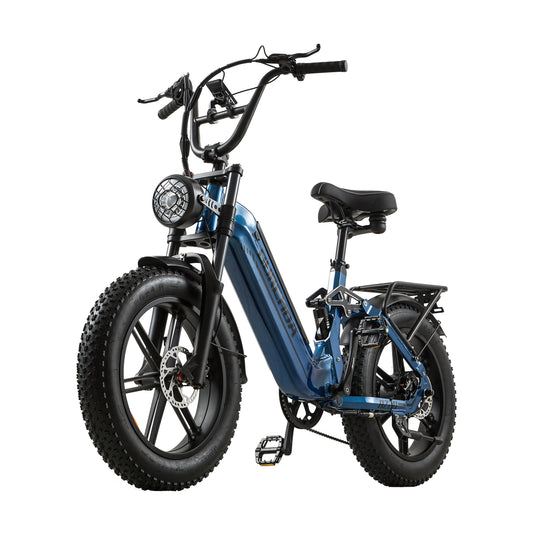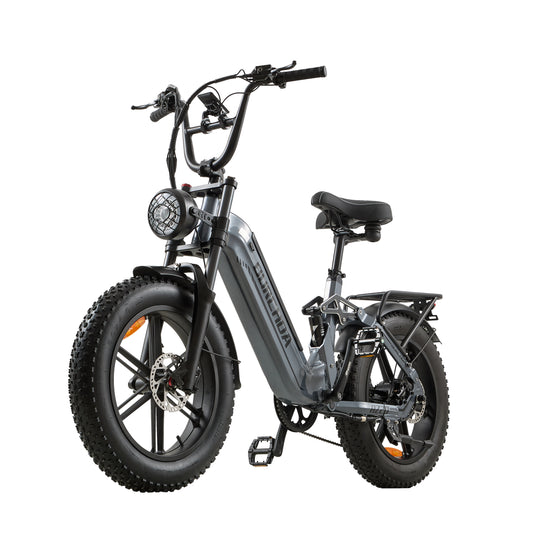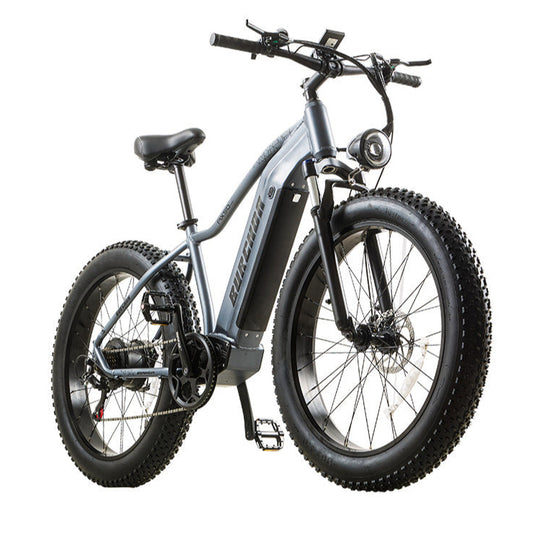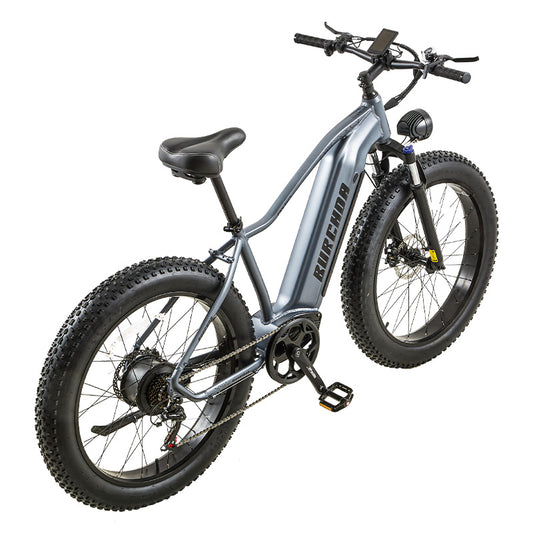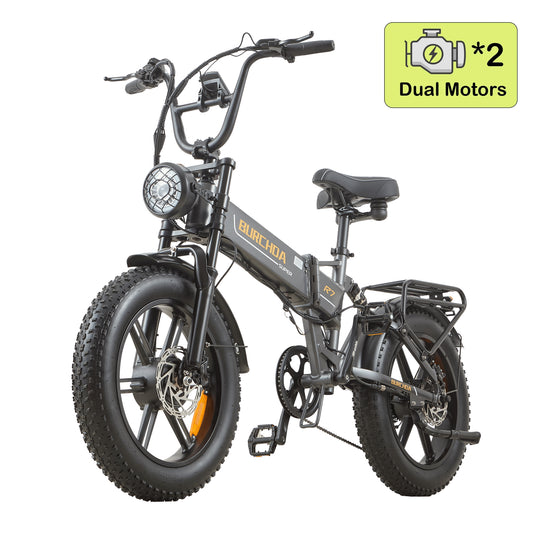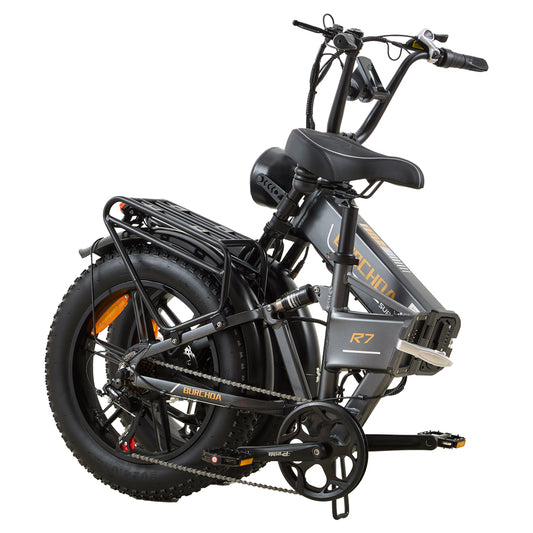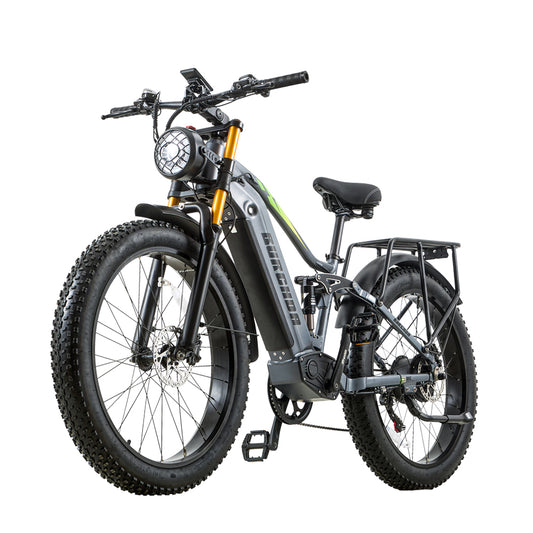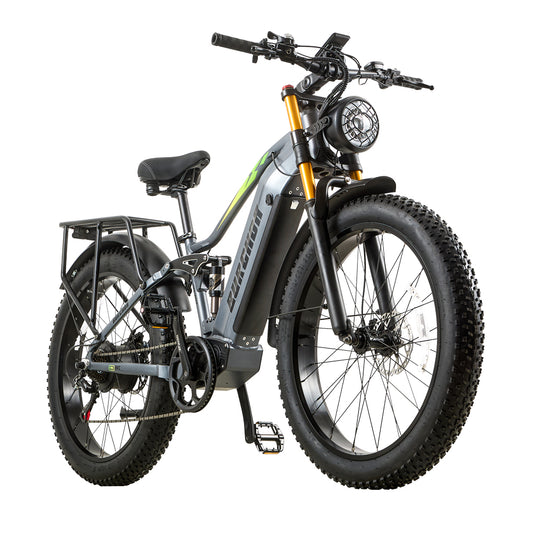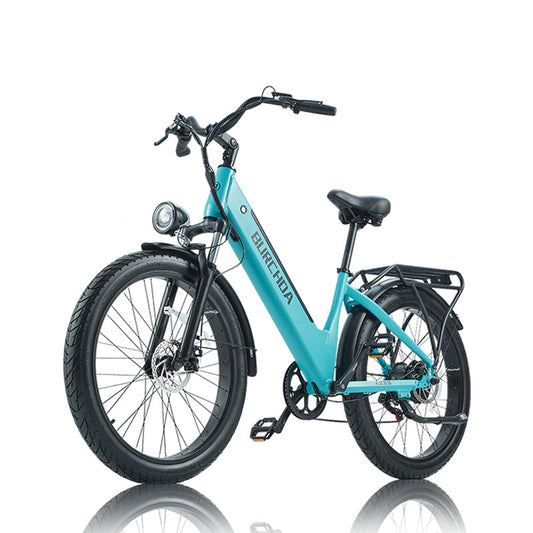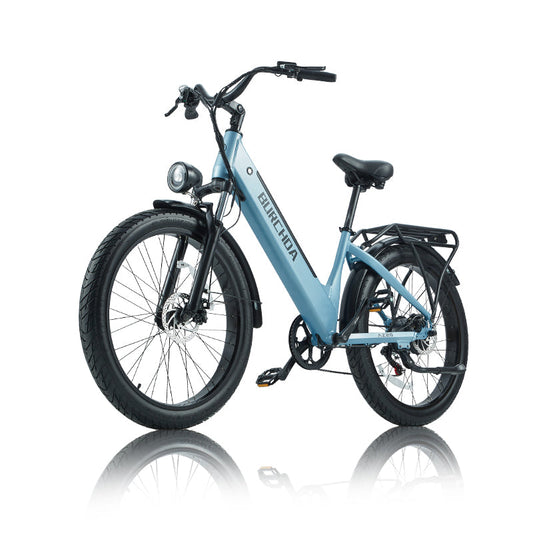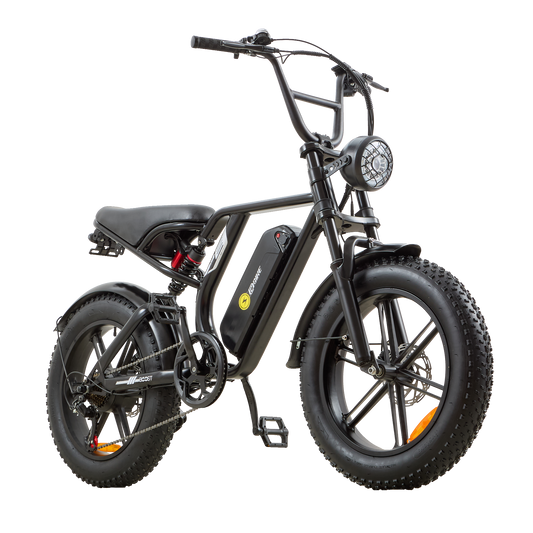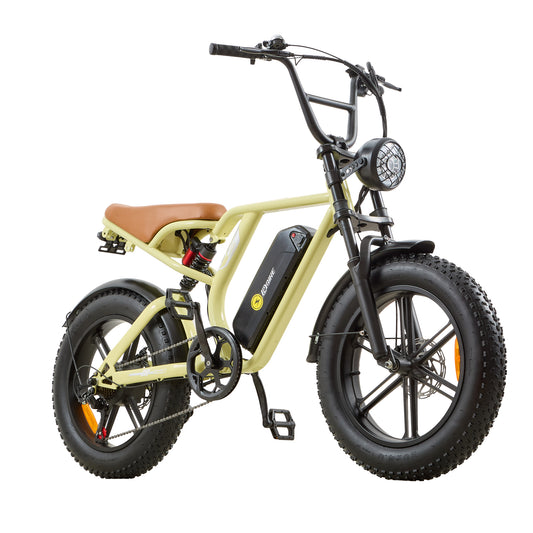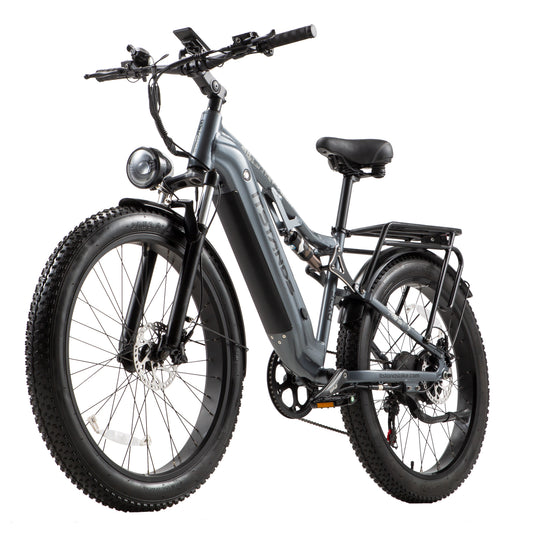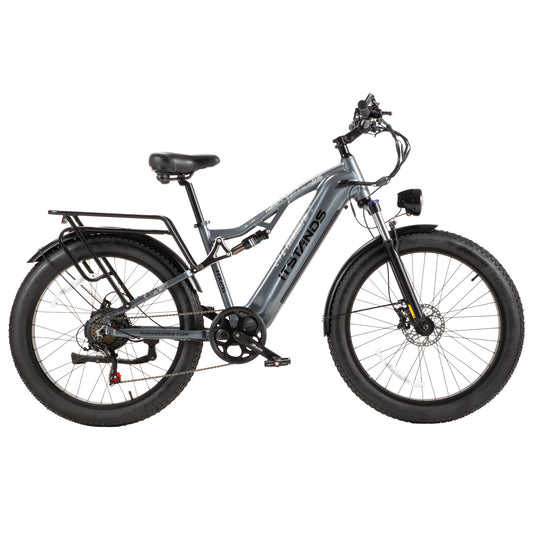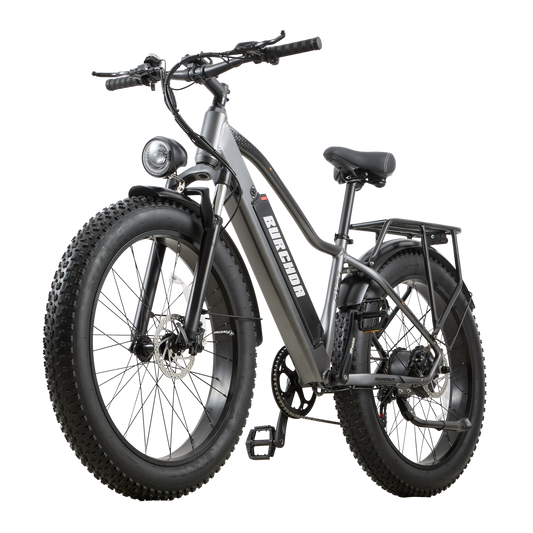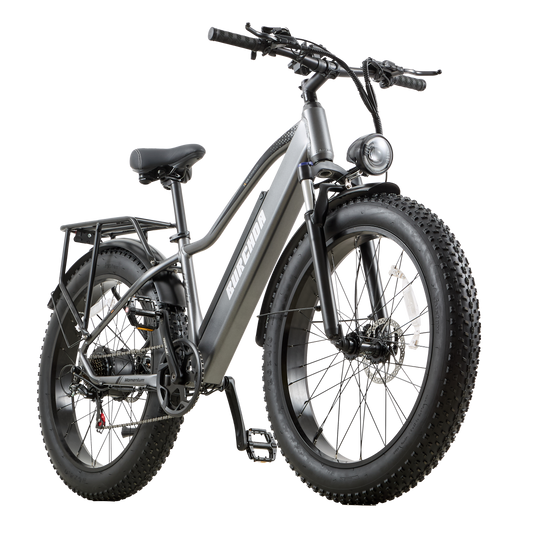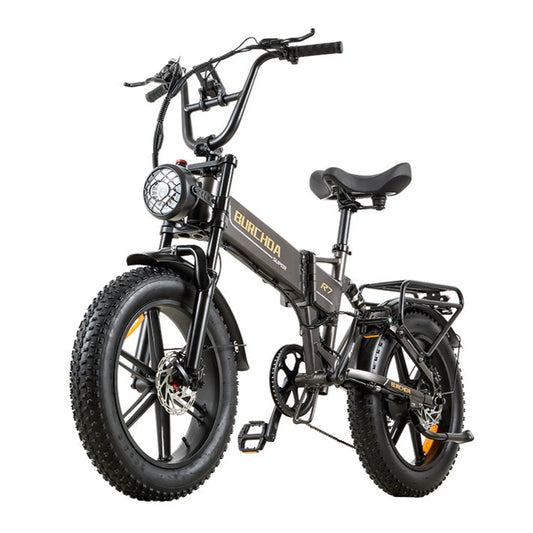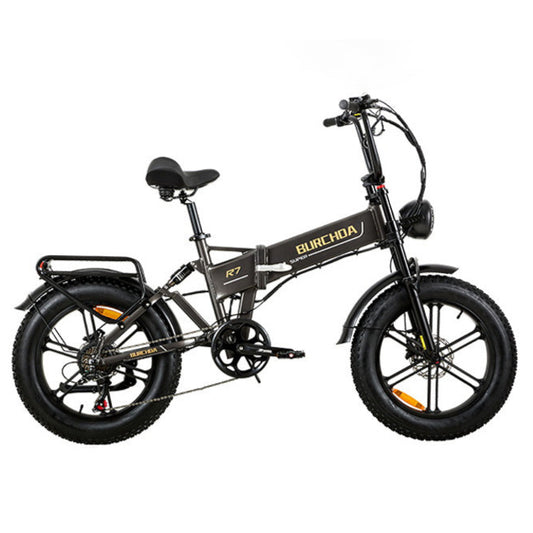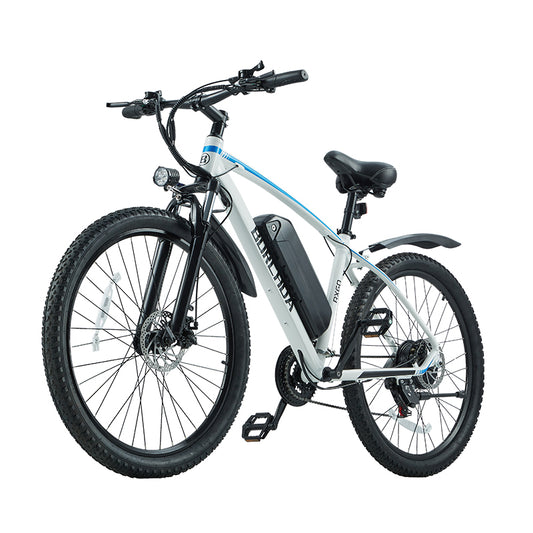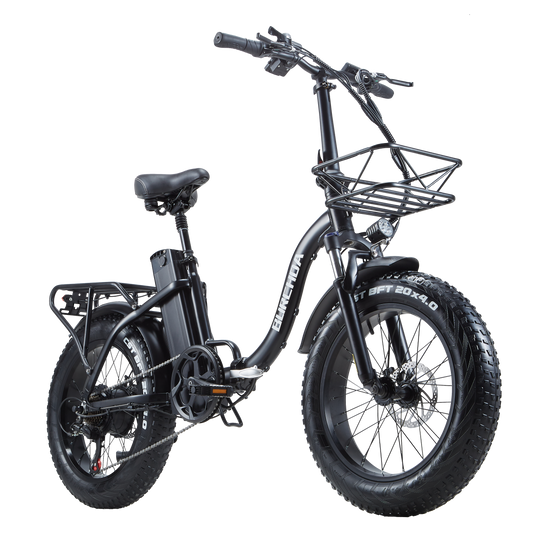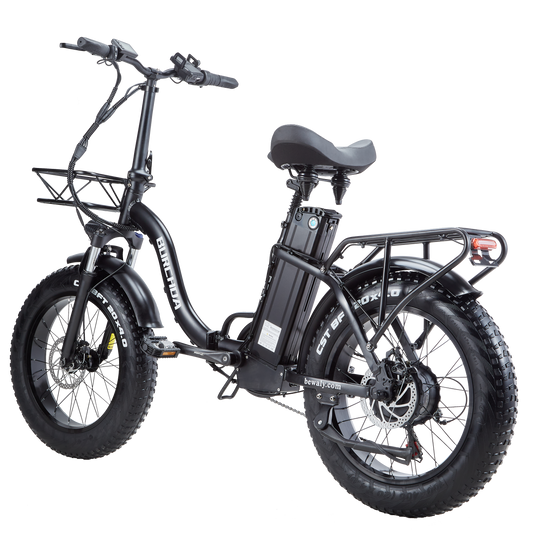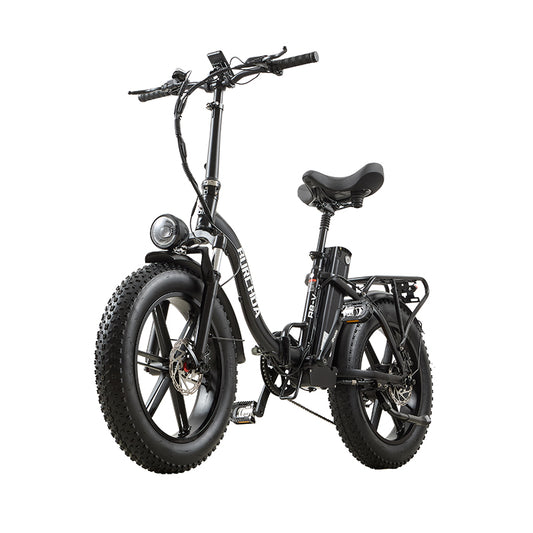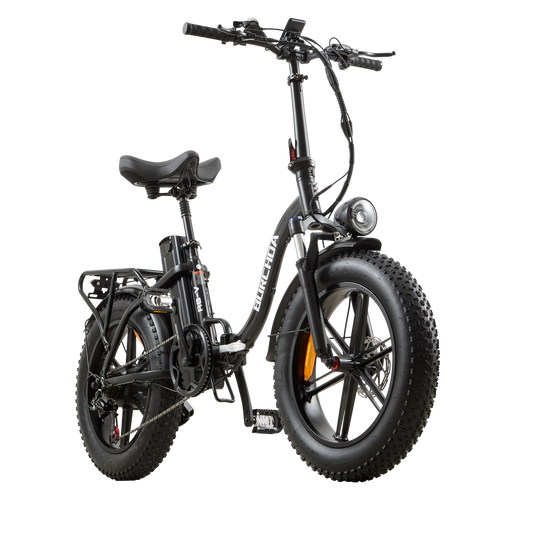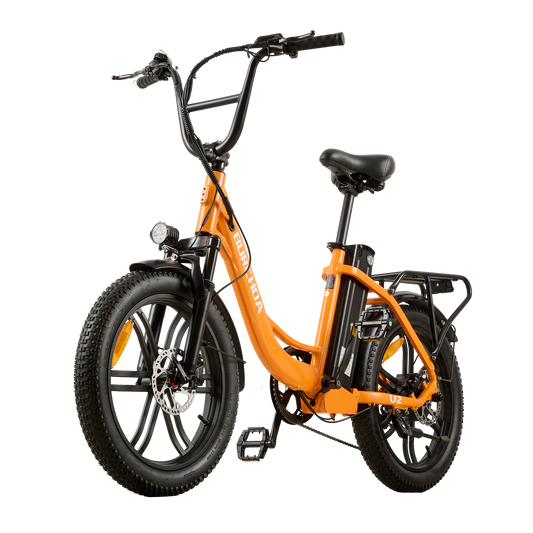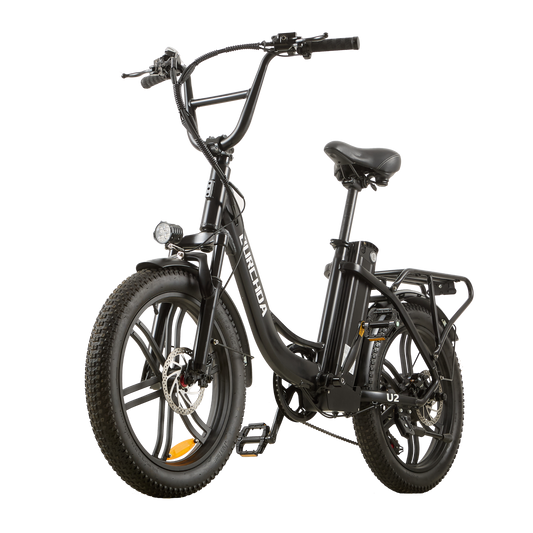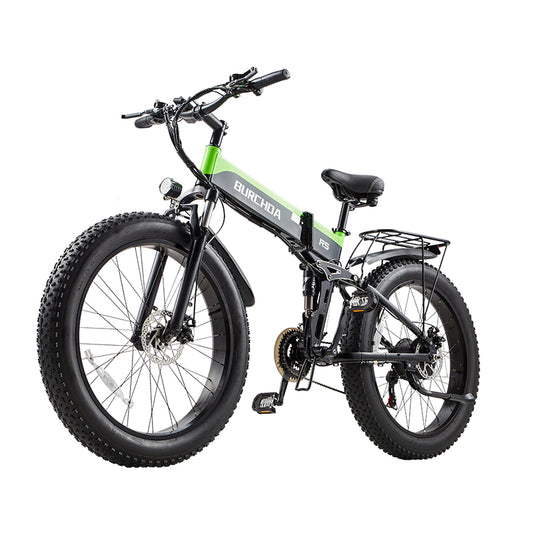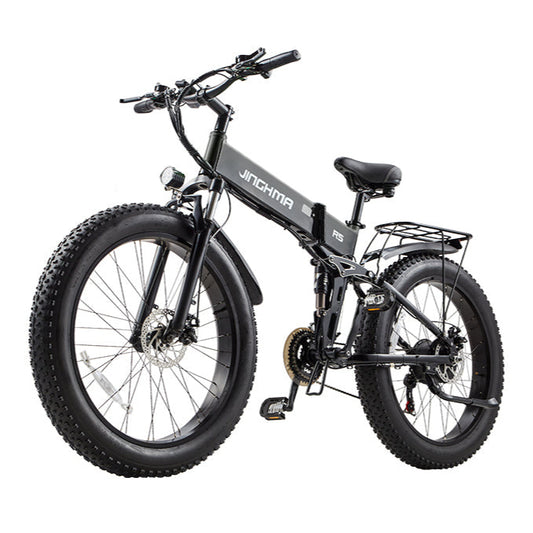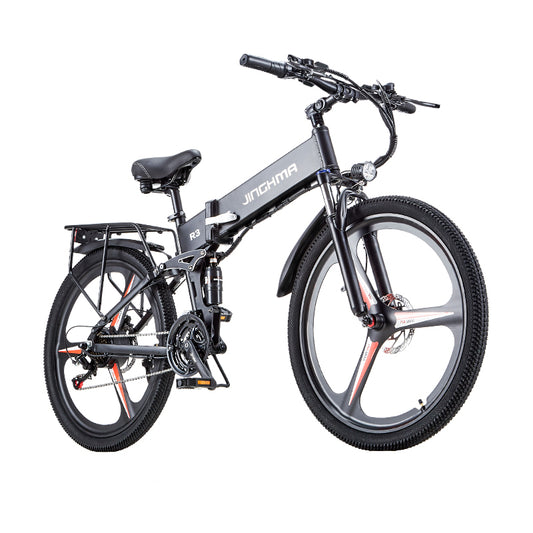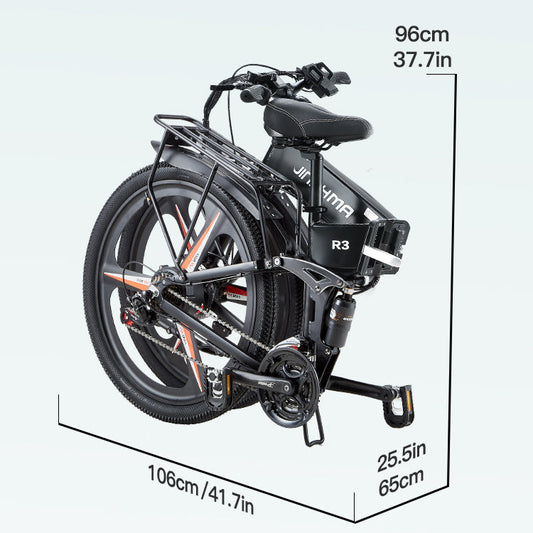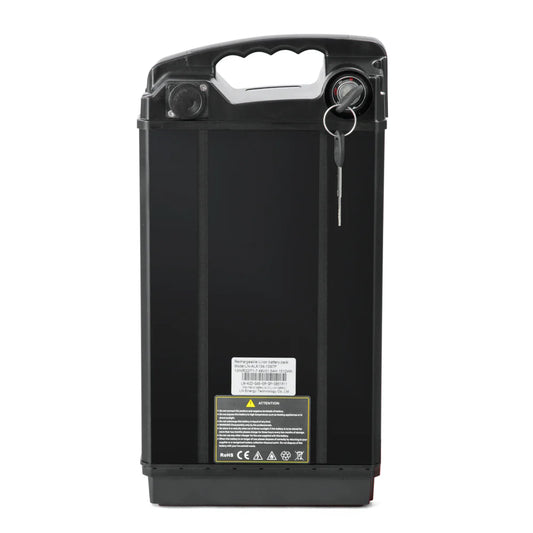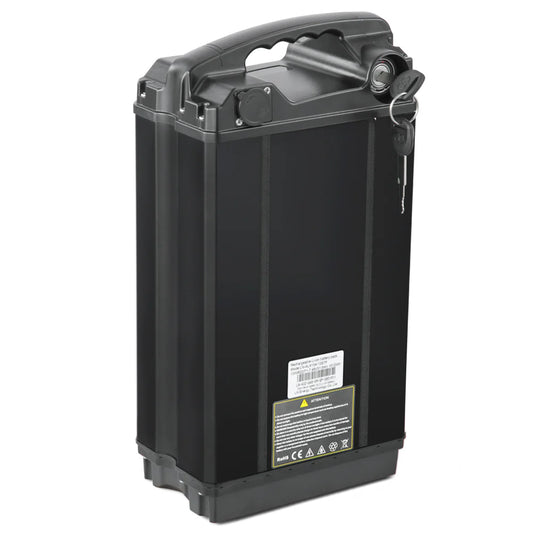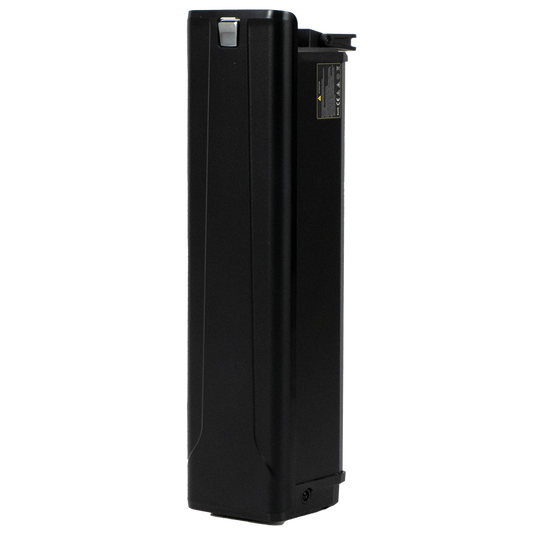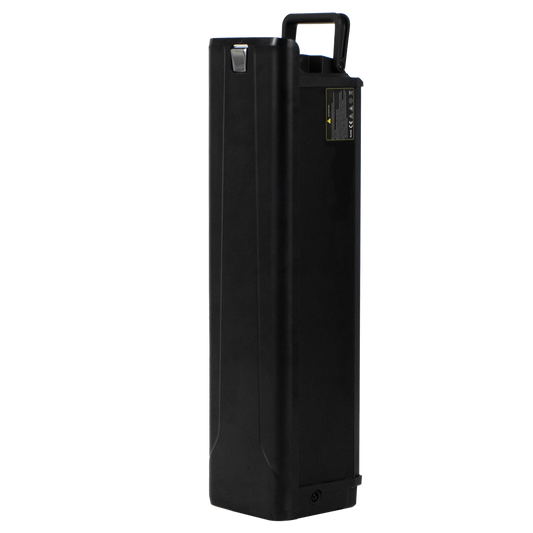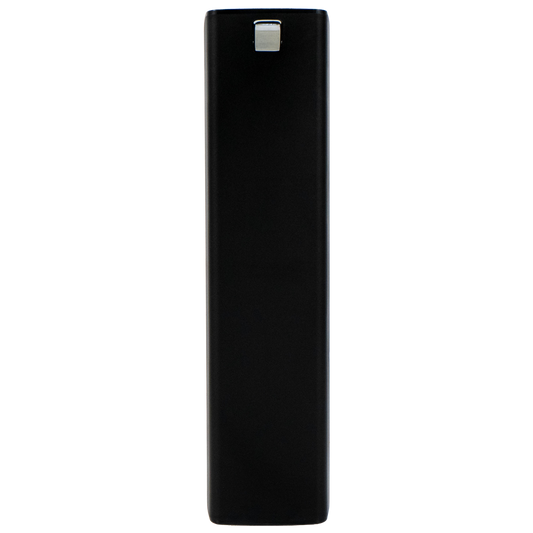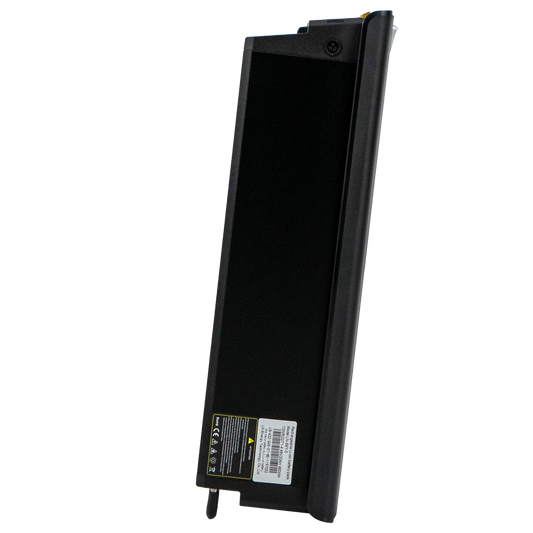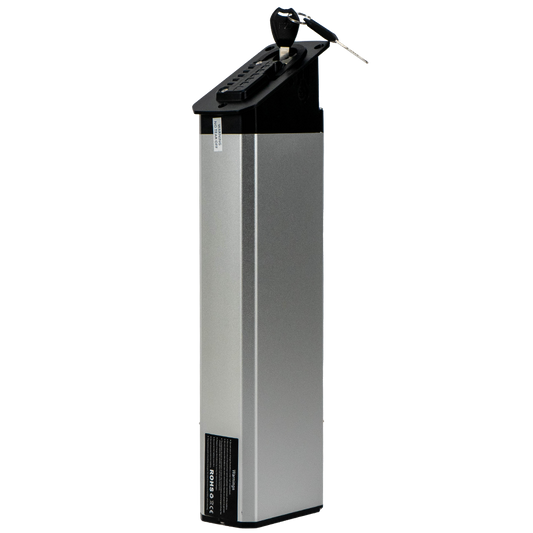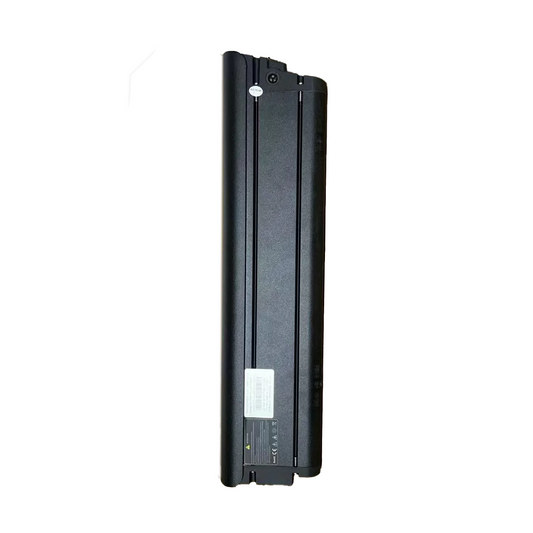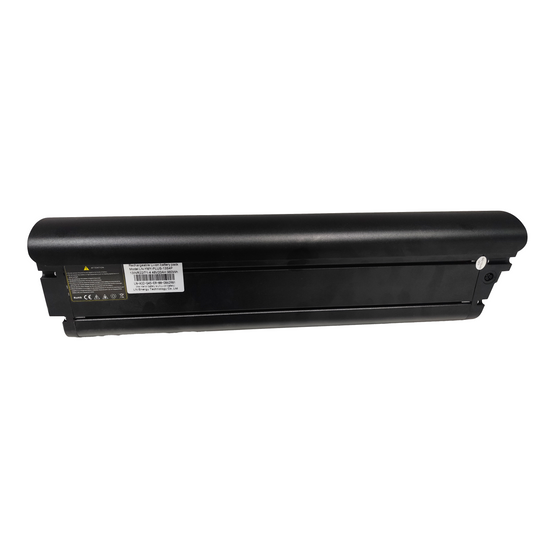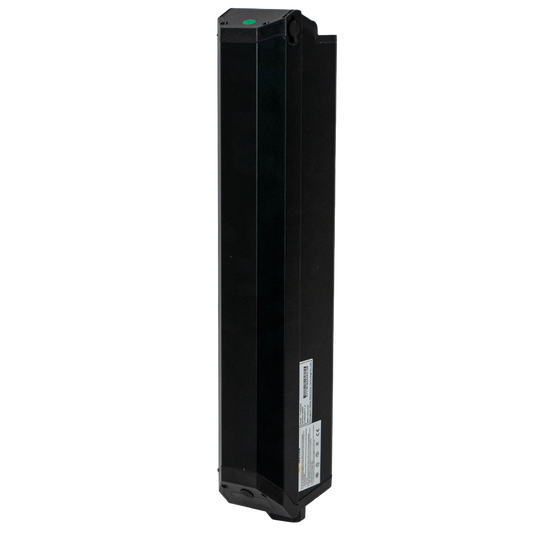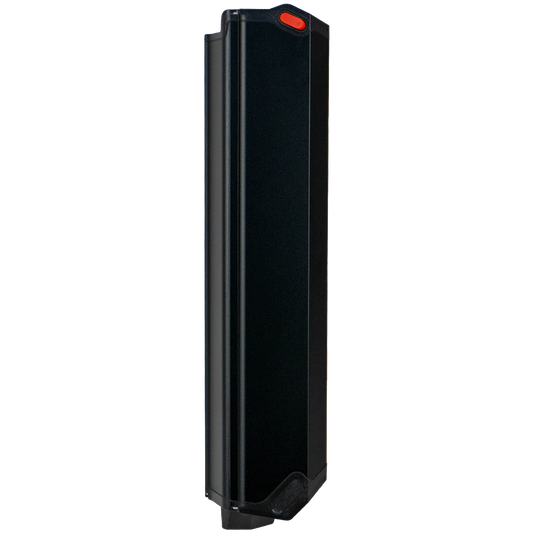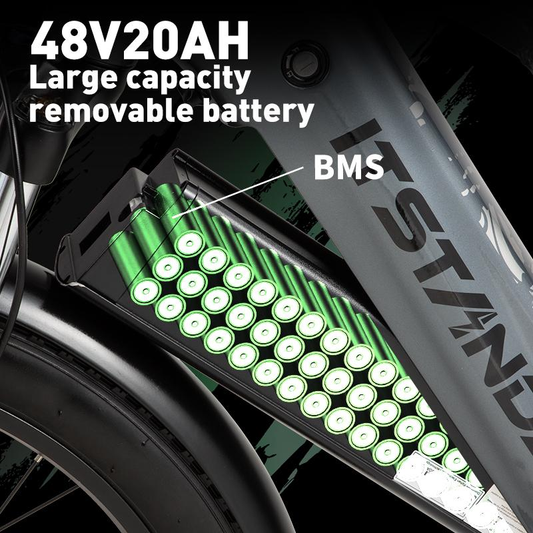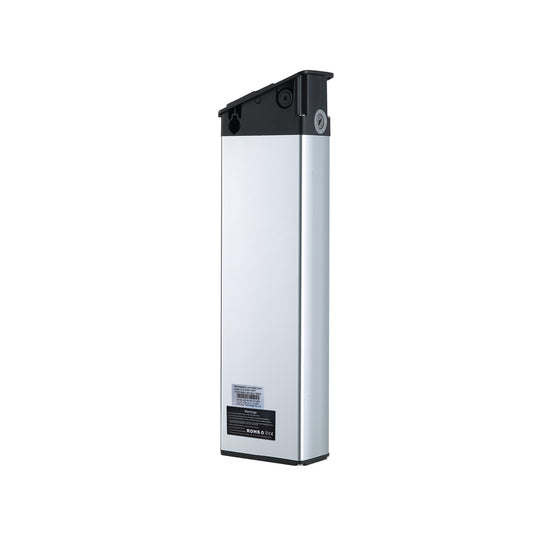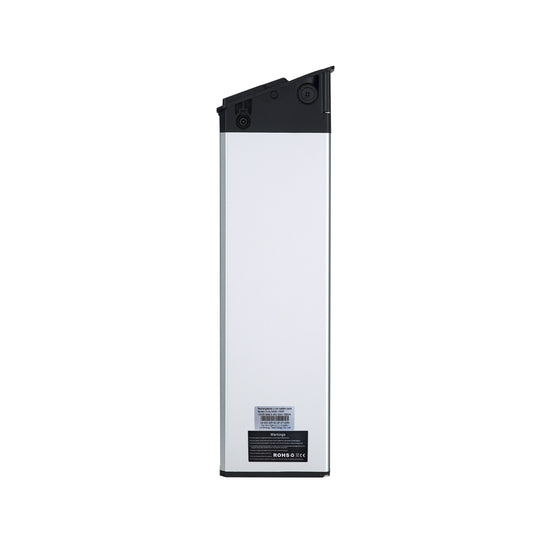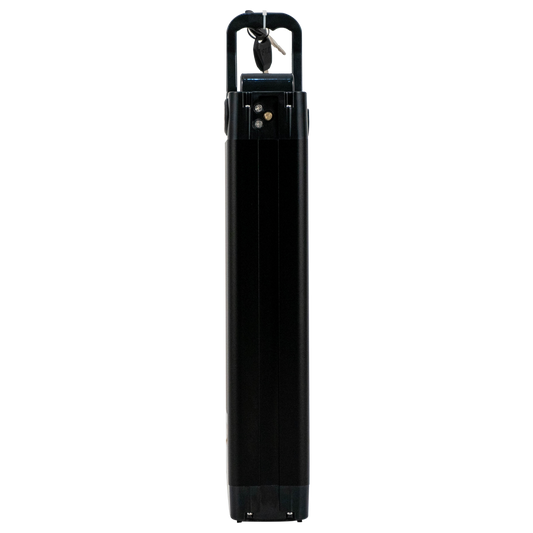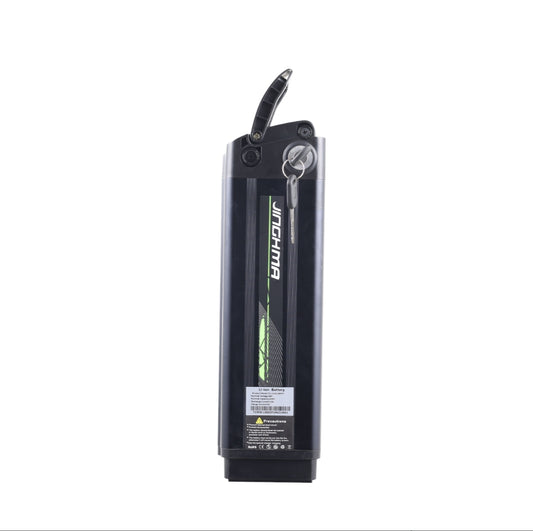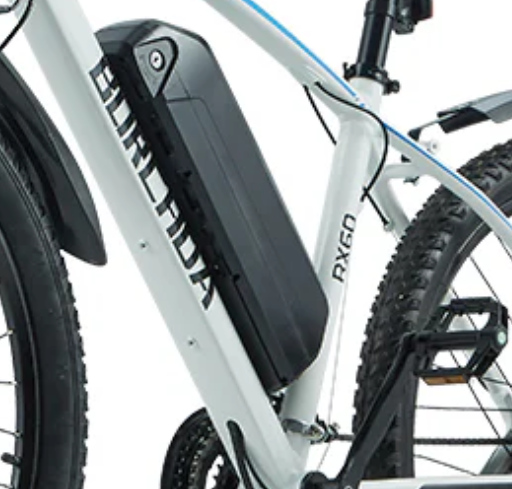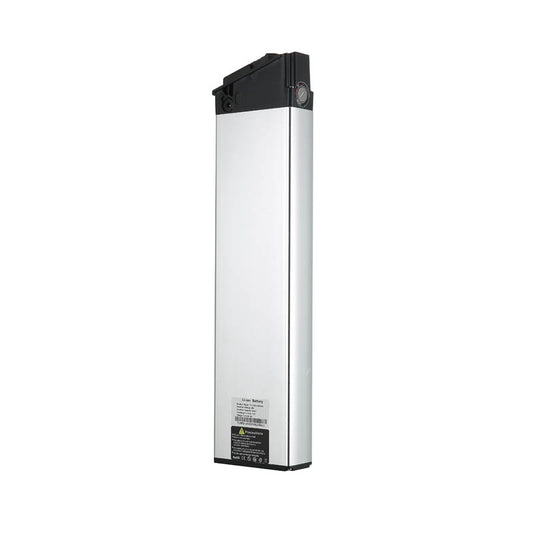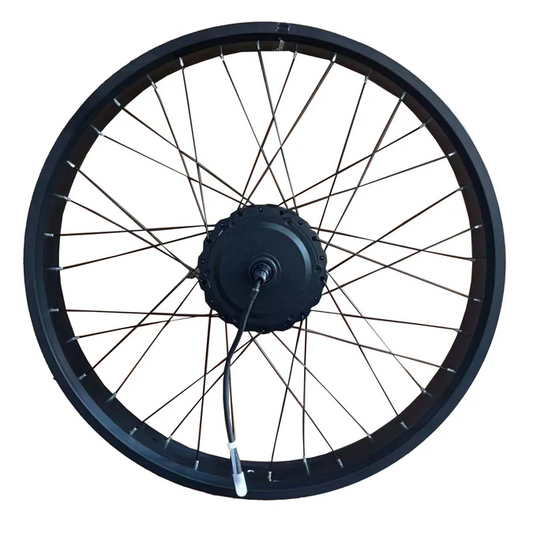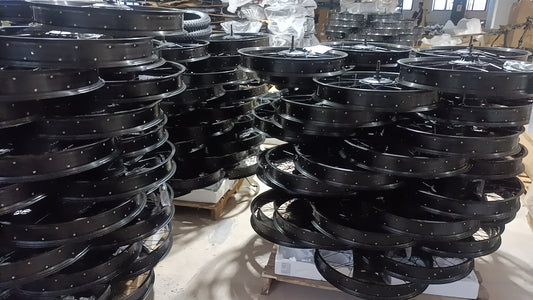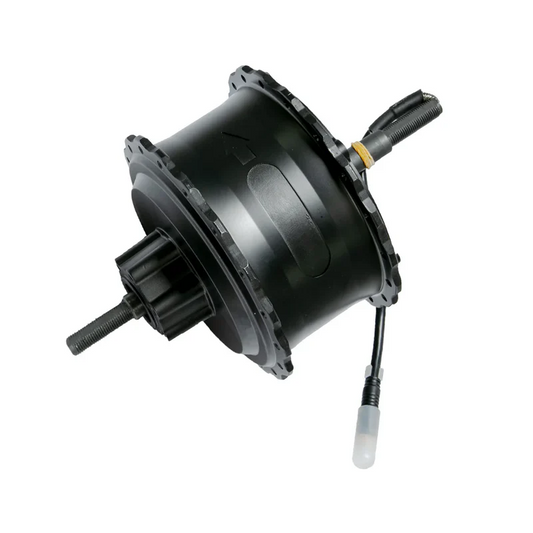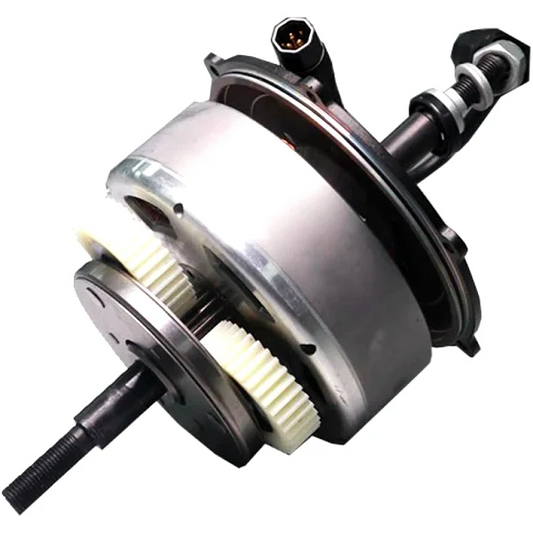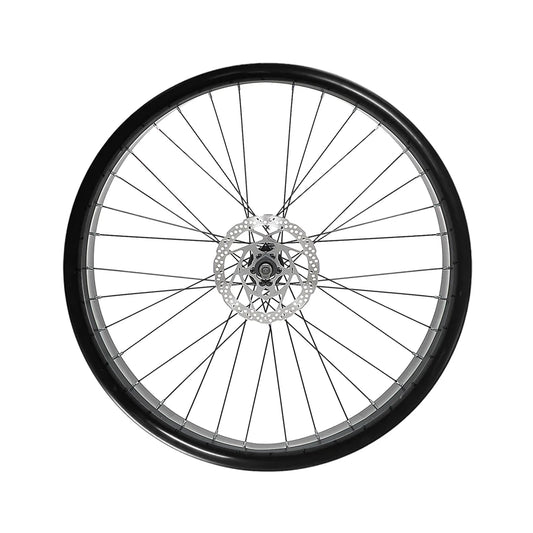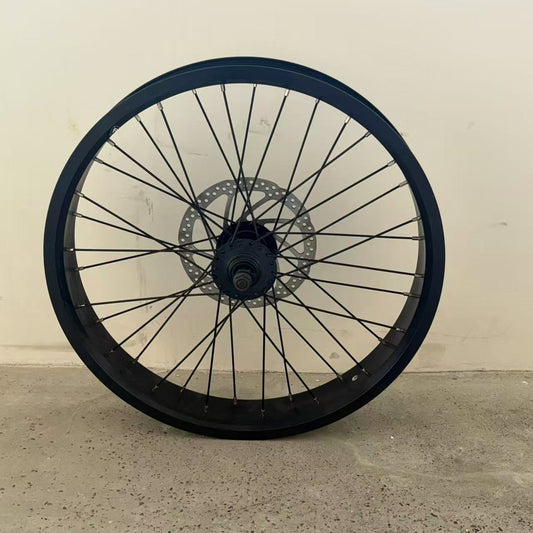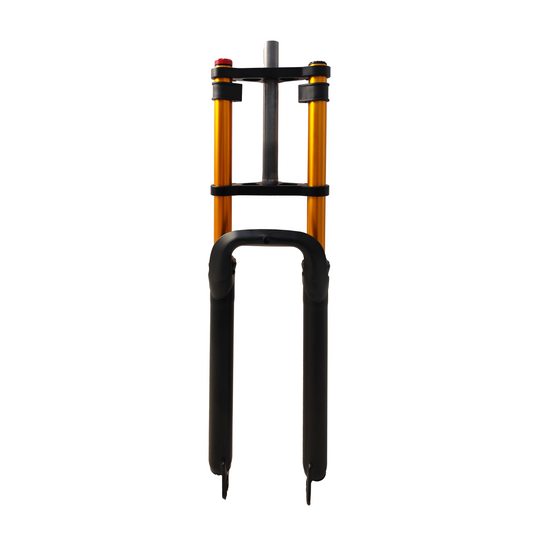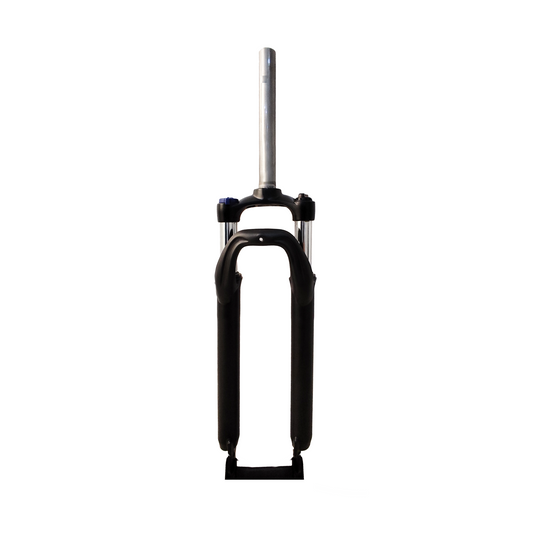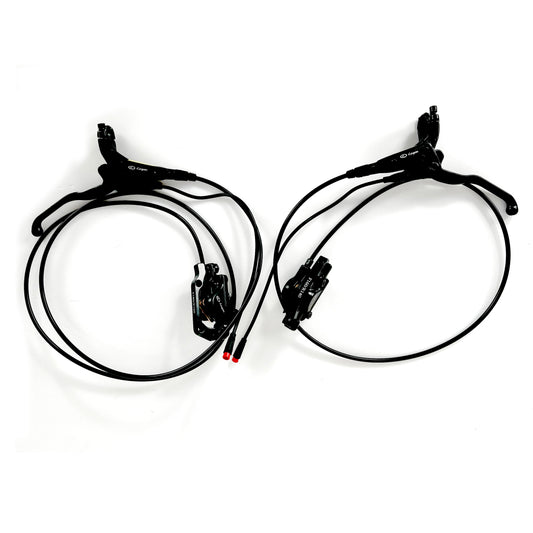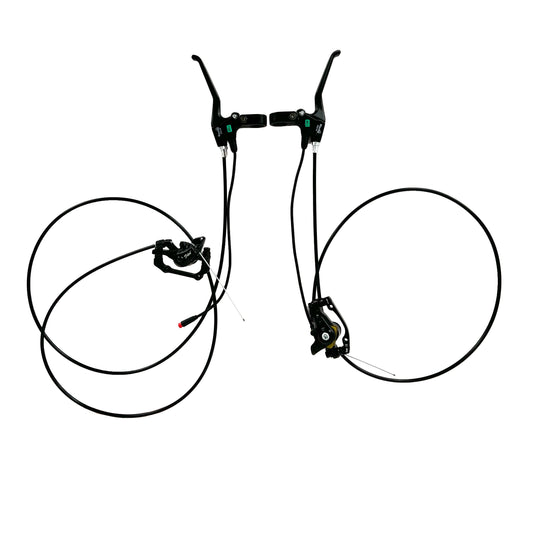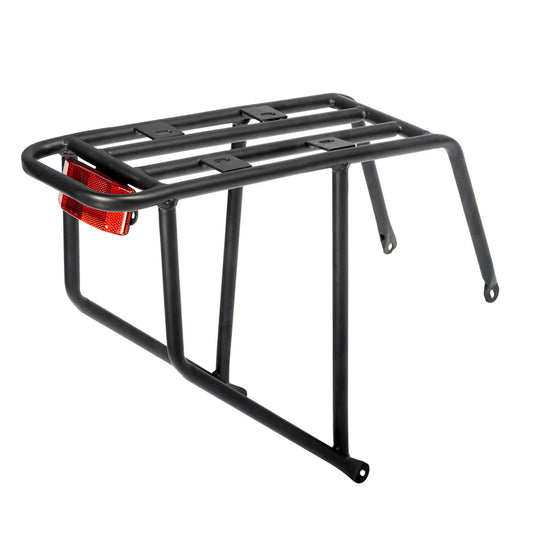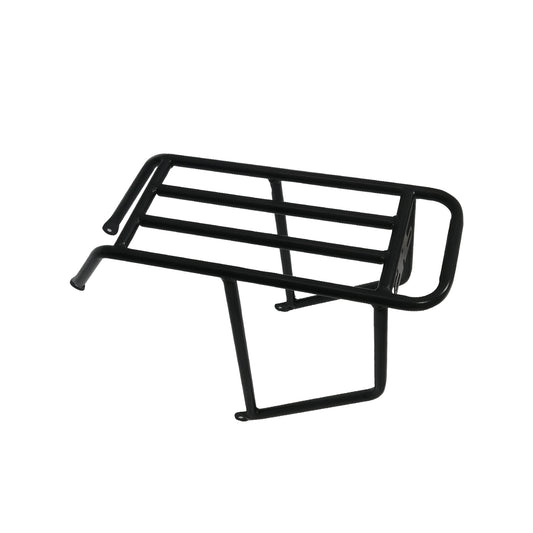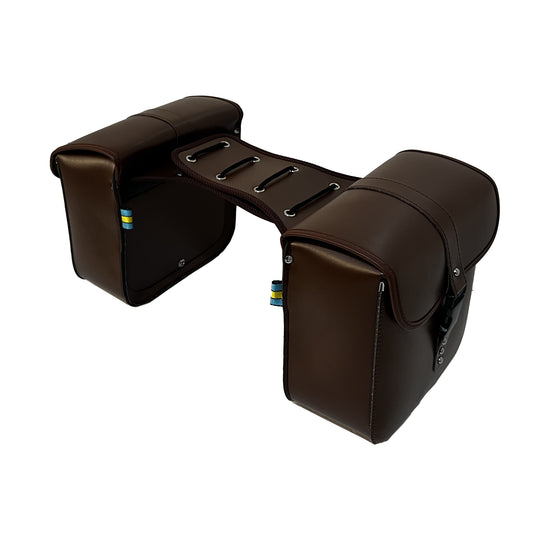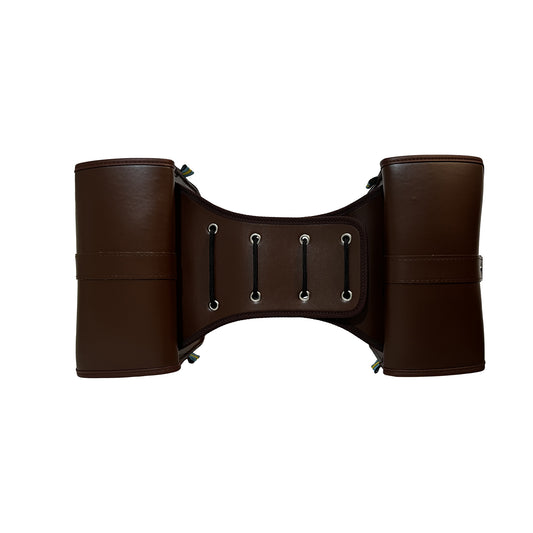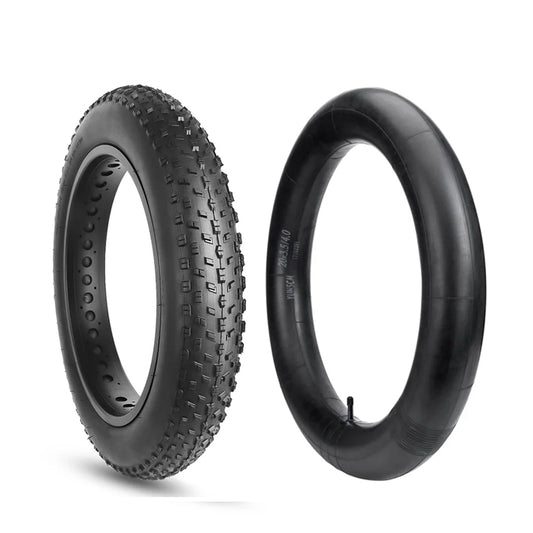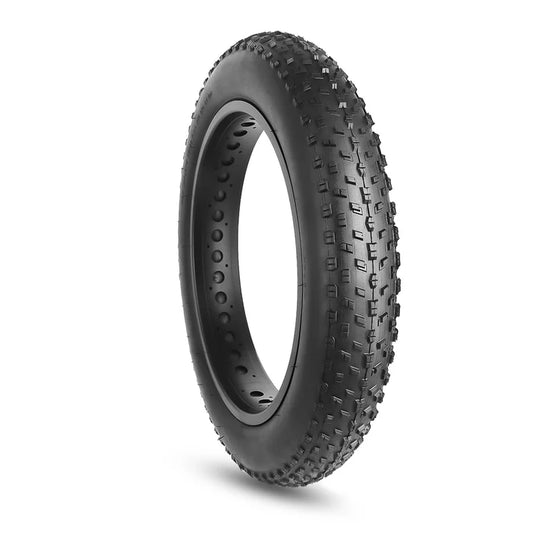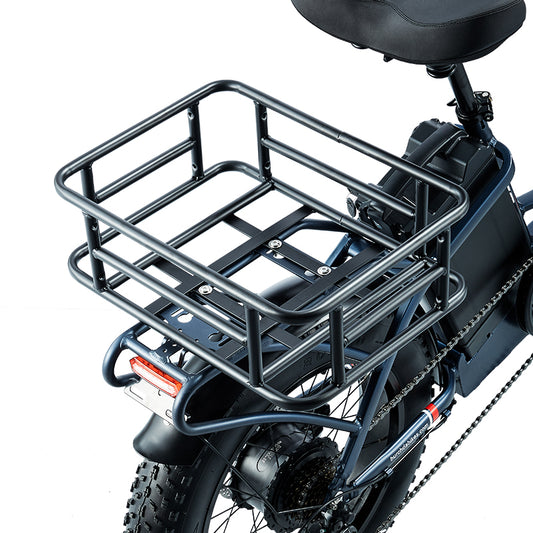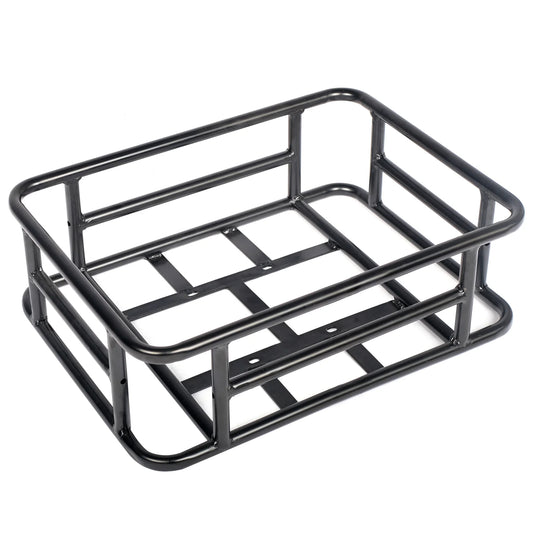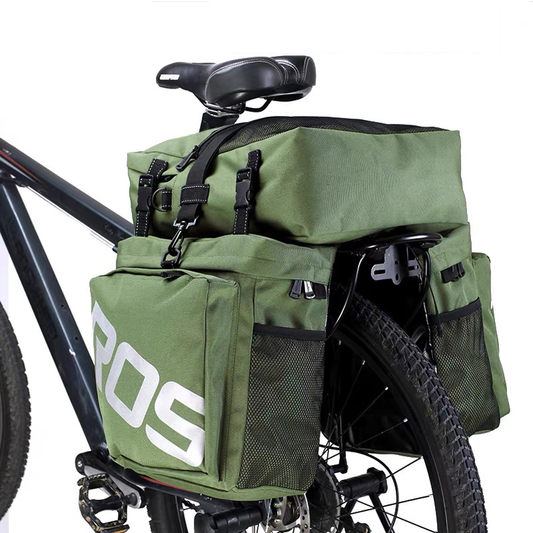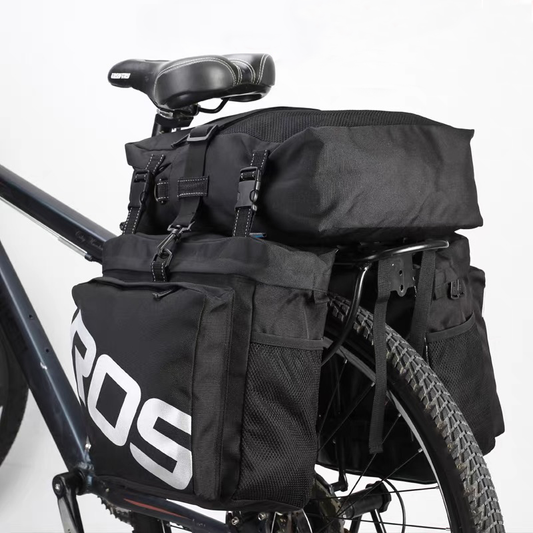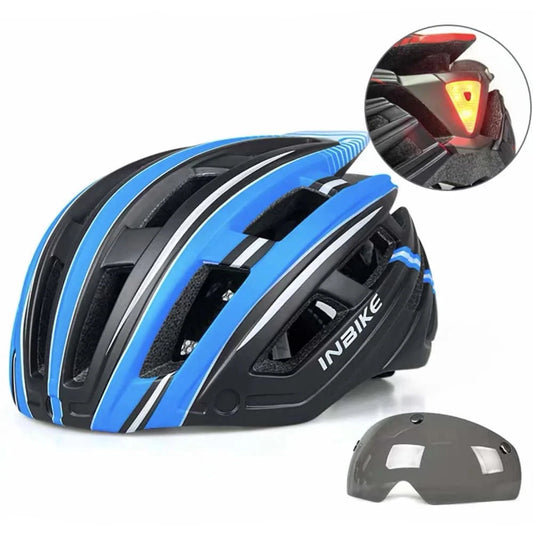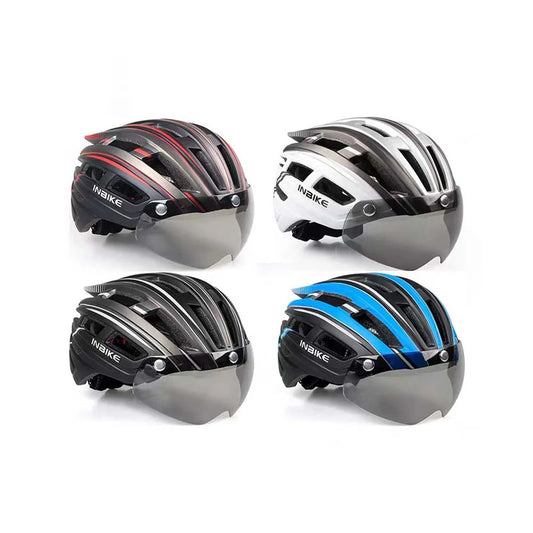My First E-Bike: How I Discovered the RX80 by Burchda
I have to admit: the RX80 is my very first e-bike. So I have no comparisons to other models or brands, but what I can offer is a first-hand report on how this bike performs in my everyday life – and what made me quite nervous in the beginning.
The purchase was a bit of a leap of faith for me. I didn’t order the RX80 through Amazon, eBay or another major online retailer, but directly from Burchda’s web shop – a brand I had never heard of before. And we’re not talking about a few spare parts here, but a four-digit euro investment. In a time where you hear so much about fake shops online, I was understandably skeptical.
But in the end, the RX80 wasn’t a spontaneous decision. I spent months researching, comparing models and calculating specs: features, performance, range, price. In the end, the RX80 clearly offered the best overall package for my needs. Still, that uneasy feeling remained – would the order really go through? How trustworthy was this provider?
What ultimately won me over was the communication with the manufacturer. My questions were answered quickly, honestly, and informatively – no vague reassurances, but clear explanations. And once I committed to the order, I wasn’t disappointed: the bike was delivered promptly from within the EU, and I was kept updated at every step. From the start, Burchda impressed me with transparent and reliable communication – and that builds trust.
Unboxing & Assembly: Big Box, Big Attention to Detail

When the box arrived, it was immediately clear: this wasn’t your average parcel. I didn’t take exact measurements, but it easily fit a fully assembled fatbike – minus the front wheel and the handlebar, which were still detached. The box itself was sturdy, made of thick cardboard with integrated handles on the sides so the shipping company could carry it properly. Visually, it made a strong impression – nothing improvised, everything thoughtfully packed.
When I opened it, I was genuinely amazed: the packaging was, frankly, over the top. I’ve rarely seen a product so carefully padded. Foam parts everywhere, rubber buffers, zip ties – everything tightly secured, nothing wobbled or rattled. Of course, after assembly, you’re left with a mountain of foam and plastic to dispose of, but in this case, I’d say it’s entirely justified. For a valuable bike being shipped from abroad, that kind of protective packaging inspires confidence.
That said, there were two small scratches on the rear rack – bare metal showing through. According to the manufacturer, these were caused by rubbing zip ties during transport. Annoying, yes, but Burchda handled it very pragmatically: they contacted me immediately and sent touch-up paint with tracking. The communication was quick, friendly, and transparent – I felt taken seriously throughout the process.
As for assembly, it was refreshingly straightforward – provided you’re not completely inexperienced with tools. The quick-start guide is well illustrated and covers all the steps pretty clearly. There’s only one part I would do differently: the headlight. The manual says to mount it below the rubber bumpers on the suspension fork – but I don’t recommend that. The fork has a long travel range, especially when set to soft. If the headlight is mounted too low, it can hit the fender during full compression. My fix: mount the light above the bumpers and leave an additional 10 mm of clearance – problem solved.

Another small tweak I made: I switched the handlebar controls. Originally, the light and horn switches were mounted closer to the grip, and the display controller further in. But since you use the display much more frequently while riding, it makes more sense the other way around. A quick and easy swap.
One major plus: all the tools you need for assembly are included – and they’re of decent quality, not throwaway stuff. Overall, it took me about one to two hours to put the RX80 together and get it road-ready. And my first impression? Unmistakably positive.
First Ride & Riding Feel: Heavyweight with a Wow Effect
I live in an area where asphalt roads are more the exception than the rule. Around my home, there are many dirt tracks and forest trails, and most of the roads are gravel. That’s exactly why I chose a fatbike – and I can say right away: it was the right decision. The RX80 is made for this kind of terrain.
My first ride took me straight over rough tracks, solid gravel roads, and even a short stretch of pavement. Despite being completely new to e-bikes, I quickly felt at ease. The wide, four-inch knobby tires smoothed out the bumps – no rattling, no jolting, the bike just glided over everything. On pavement, it ran straight and steady. I even managed to ride hands-free, which I honestly didn’t expect from tires with such a coarse tread.
Of course, I had to familiarize myself with the display and the various support levels. There’s a lot you can adjust – though unfortunately not everything that’s technically possible (more on that later). I was also a bit unsure about the brakes at first – they felt a little weak. But after about 20 kilometers, they were properly bedded in and started gripping powerfully and reliably. So: no worries there.
What really surprised me was the build quality. All pre-assembled parts – especially the handlebar mount – came already secured with Loctite. That shows attention to detail. The bolts I had to install myself (like on the rear rack) also felt solid and high-quality. Nothing seemed flimsy or looked like it would strip after three turns. That speaks volumes about the bike’s overall sturdiness.
Of course, the weight takes some getting used to: the RX80 weighs around 33 kilograms. You really feel that in the first few turns. If you’re coming from a lightweight road bike or city bike, you’ll need to adjust – the ride feel is completely different. In corners, it’s still easy to handle, just a bit heavier. On uneven or sloped terrain, the wide tires can grip unevenly depending on the angle, which slightly affects steering. But this isn’t a flaw – it’s just a typical trait of fatbike geometry. As long as you keep a firm grip on the handlebars, everything stays under control.
My first three rides totaled about 51 kilometers, spread over several days. And even though it was only a few rides, I already felt like I was “in tune” with the bike. The mix of comfort, power, and control won me over immediately – and the more time you spend on it, the more fun it gets.
Motor, Battery & Range: Powerful and Reliable – with Room for Fine-Tuning
I covered my first 51 kilometers with the RX80 over several days – on trails, gravel roads, and pavement. I tested different assist levels, did short sprints, activated the 45 km/h mode, and spent time exploring the display settings. In short: It was not battery-friendly riding. Still, the battery indicator didn’t drop to the last of five bars until I had covered about 48 kilometers – and I charged it at 51, just to be safe. I didn’t want to end up pushing or pedaling a 33-kg bike home without assistance.
Later, during a test ride in steady 25 km/h mode, I was pleasantly surprised to see that after 27 kilometers, I still had four bars left. That’s promising – with conservative riding, you can likely reach real-world ranges well over 60 kilometers. I still need to gather more long-term experience, but so far, the 48-volt hub motor has performed reliably and doesn’t lag – even on steep inclines. Whether it’s a field or forest path: the motor kicks in forcefully and climbs with confidence, without tapering off.
One thing that could be improved is the way power is distributed across the assist levels. The display allows switching between 3 and 5 PAS (Pedal Assist System) levels – I use the 5-level mode. In that mode, levels 1 and 2 provide very gentle assistance, and level 3 suddenly gives a noticeable boost. The progression isn’t smooth – a more linear ramp-up would feel much better. Technically, the YL81F display (by Yolin) is capable of more detailed tuning – some bikes with the same display let you set custom power percentages per level. Unfortunately, these menus are disabled or hidden on the RX80. It would be great if Burchda enabled them in a future firmware update – not every rider is comfortable with this “step-jump” logic.
The battery itself is impressive: 48 volts, 20 amp-hours – that’s a hefty 960 Wh, which is excellent for this price range. The battery slides into the front part of the frame from below, with the tip pointing forward and down. One thing to watch out for: if the front wheel is straight, the battery might hit the fender. So it’s best to turn the handlebar slightly and guide the battery carefully with one hand – maybe even support it a bit with the other to avoid scratches. Once you get the hang of it, it’s quick.
The battery clicks into place with a solid snap – though the first insertion takes a bit of force. Once locked in, it sits firmly. To remove it, you need the key – the built-in battery lock keeps things secure. That’s an important feature, especially if you plan to park the bike in public places: nobody’s walking off with your battery that easily.
Brakes & Handling: Heavy, But Confident
On my first rides, the brakes were actually a bit of a question mark. At first, they felt soft – not exactly snappy. But that quickly resolved itself: after about 20 kilometers, the hydraulic disc brakes had clearly bedded in. From that point on, they gripped powerfully and still remained easy to control – even at higher speeds. I’m not sure yet how often this braking system needs maintenance, but so far it’s working flawlessly and gives a strong sense of safety.
The RX80’s handling also impressed me – especially considering its weight. At 33 kilograms, it’s no lightweight, but it still rides surprisingly well. Everything about the bike feels sturdy and well thought out – even the kickstand is designed for the weight. No flimsy prop here – it’s a solid stand that keeps the bike upright with no drama.
At very slow speeds – like when maneuvering through narrow city paths or past pedestrians – it takes some concentration to keep the front wheel steady. That’s probably due partly to the weight, and partly to my own lack of experience with such heavy bikes. Once you’re moving faster, the handling stabilizes by itself – which makes sense, physics-wise.
One small quirk I noticed quickly: the rear light is integrated directly beneath the saddle – in such a way that you switch it on just by grabbing under the saddle to lift the bike. I used to lift my old bike at the saddle and handlebar to turn it around. That doesn’t work here – I kept accidentally turning on the light. Now I just lift the RX80 by the rear rack. Works just as well – it’s just a different habit.
The tires also take some getting used to. Those chunky 4-inch treads not only give the bike a bold look – they also act as part of the suspension. The RX80 is already fully suspended front and rear, but the fat tires absorb bumps impressively well. The key here is tire pressure: these tires run at much lower pressure than standard ones. Luckily, the sidewall tells you: max 1.4 bar (20 PSI). That sounds low – and with my 89 kg body weight, they do flatten a bit. But that’s totally normal for fatbikes. The slight squish improves comfort and grip, especially off-road.
Conclusion: Despite its weight, the RX80 rides securely and comfortably. Whether in corners, on uneven ground or at low speeds – it takes a little getting used to, but once you do, it’s a blast. It’s a different beast compared to a typical trekking or city bike – and that’s exactly what makes it fun.
Everyday Use & Off-Road: A True All-Rounder That’s Fun to Ride
When it comes to off-road riding, the RX80 is in its natural habitat. I’ve tested it thoroughly on dirt trails, gravel roads, over roots, uneven terrain – even small sand dunes. And I have to say: where other bikes bog down or lose traction, the RX80 just powers through. On sand especially, the wide knobby tires make all the difference – no slipping, no sinking. I found myself grinning at how effortlessly it handled even loose surfaces. The powerful motor helps too – it pushes you right through. Sure, it eats more battery, but honestly? Totally worth it for the fun.
In everyday use, the RX80 also does a great job. I’m gradually equipping it with accessories – there’s already a phone holder mounted, and I’m planning to add panniers and a rear trunk bag. Thanks to the bike’s solid build, it doesn’t just look stable – it is. I believe the payload limit is 200 kg including the rider – I’d have to double-check that on the website, but it’s definitely capable of carrying groceries or gear.
If you want to ride the RX80 legally in Germany, a few small modifications are necessary. For example, the thumb throttle: that’s not allowed here unless the bike is registered as a speed pedelec. Fortunately, Burchda thought of that – the throttle is detachable. Just unscrew it, disconnect the cable, cap the connector – and you’re good to go.
You also need to swap out the spoke reflectors. The factory ones are white – in Germany, they have to be orange. The rule is: two orange reflectors per wheel. I solved this a bit more elegantly with reflective rim tape – also allowed here – which creates a glowing ring effect when lit at night. Looks great and meets the legal requirements.
What I also appreciated: Burchda includes a few nice extras with the bike. For example, a lock, a mini pump, and some other small but useful items. That’s not standard these days – and it shows that someone actually thought about the little things.
In short: If you want a bike that works for both off-road trails and everyday errands, the RX80 delivers. It’s tough, strong, well-designed – and with the right add-ons, extremely versatile.
Manufacturer & Support: Personal, Responsive, and Surprisingly Committed
What truly impressed me during the RX80 purchase – and honestly even surprised me a bit – was how committed the manufacturer’s support team was. The first issue popped up right after I placed the order: apparently, my email provider blocks emails from China by default. So I never received a confirmation from the store and started to worry that something had gone wrong.
But Burchda didn’t just leave it there – they took action. They used an alternative email account, one not based in China, to resend the confirmation. Later, when I contacted them about minor shipping damage to the rear rack, the same thing happened: emails from China didn’t reach me. But because I had entered my phone number during the purchase, their support team simply reached out via WhatsApp.
That might sound like a small gesture, but it made a big difference: the manufacturer actively tried to reach me, offered solutions, and stayed polite and transparent throughout – no forms, no ticket numbers, just help. That level of customer care builds trust. And honestly, it doesn’t even cost much – just a little effort and the will to help.
In my case, the issue was two small paint scuffs on the rear rack, probably caused by zip ties during transport. Instead of brushing it off, they immediately offered a solution: a touch-up paint pen in the right color, complete with tracking. I accepted the offer – not only because the rack was structurally fine, but also because I didn’t see the point in asking for a full replacement over such a cosmetic issue.
For me, the message was clear: when a manufacturer is this fair, transparent and solution-oriented, the customer should respond in kind. And that’s exactly how I handled it. Burchda’s support left a lasting, positive impression – and I think it deserves to be mentioned publicly.
Display & Controls: Loads of Information, Lots of Options – Use With Caution
The RX80’s display is large, rectangular, and easy to read even in direct sunlight. It gives you all the key information at a glance: battery level, current speed, trip and total distance, average and max speed, and your selected assist level. Everything you need is right there during the ride.
Using the plus and minus buttons, you can switch between assist modes: 0 to 3 (or 1 to 3) and 0 to 5 (or 1 to 5). Which one you prefer is a personal choice – I use the 5-level mode. You can make the change in the settings menu of the display. You can also adjust the maximum assist speed there.
Important for riders in Germany: By default, the RX80 is set to 45 km/h – which is only allowed if the bike is registered as a speed pedelec. If you want to use the bike legally as a standard e-bike, you must reduce the top speed to 25 km/h in the menu. That’s quick and easy to do – you can even select in-between values or higher ones, but technically, the motor will not assist beyond 45 km/h. Most likely, the controller or motor limits the max assist speed to 45.
The display offers many more technical settings than you’ll ever need in everyday use. For example, you can change the number of magnets in the cadence sensor or the nominal voltage of the battery. Personally, I would advise against changing those unless you know exactly what you’re doing. I don’t know for sure what could go wrong, but I imagine setting the wrong battery voltage or other values could cause problems or malfunctions. So if you explore the advanced settings, be careful – and maybe read the manual first.
Speaking of which: I strongly recommend using the official Burchda manual, which matches the menu structure on the display 1:1. There are other manuals online for the YL81F display by Yolin, since it’s used in various e-bikes – but the available functions and menu layout may differ. To avoid confusion, the Burchda manual is your safest bet.
Bottom line: The RX80’s display is well thought out, informative, and packed with features. If you take the time to learn how it works, you’ll appreciate it – but tread lightly in the technical settings if you’re unsure what they do.
Wishes & Improvement Potential: Small Tweaks, Big Impact
Even though I’m very happy with the RX80 overall, there are a few areas where I’d love to see improvements – nothing major, but still worth mentioning.
Top of my list: more flexibility in the assist settings. Currently, only two assist modes are available: 0/1–3 or 0/1–5. That’s fine, but I know that the YL81F display is capable of much more. Other bikes with the same screen allow 0–7 or even 0–9 levels. And more importantly, they let you assign individual power percentages to each level – e.g. 20 % for level 1, 40 % for level 2, and so on.
That’s not possible on the RX80. The menus for those options are either disabled or hidden. I don’t know whether Burchda chose to hide them, or whether it’s due to the controller or some other limitation. And I don’t know if a firmware update could change that. What I do know is this: the way power is currently distributed across the 5 assist levels is not very balanced. Levels 1 and 2 are extremely weak, while level 3 suddenly gives you a noticeable boost. I would love to adjust that myself – but I can’t. More tuning options here would be a huge plus.
Another practical improvement would be to switch the default position of the handlebar controls. Out of the box, the light/horn module is placed close to the grip, and the display controller is further inward. Since I use the display more often while riding, I just swapped them. It only takes a few minutes – but it would be better if it were installed that way to begin with.
And one small point – more of a “nitpick” really: the manual could be clearer about how to assemble the front wheel, specifically the order of the washers on the axle. In my case, there was one more washer on one side than the other. That made me uneasy, so I bought an extra washer to balance it out. It would’ve worked fine either way – but I like things neat and symmetrical. A quick diagram or note in the manual would fix that for others.
In the end, these are all just details – but it’s exactly those little things that shape the overall experience. And there really isn’t much left to improve on the RX80 – just a few tweaks.
Conclusion After 1.5 Weeks: My Ideal Companion for Trails and Daily Use
I live in an area with many unpaved roads, forest paths, and gravel tracks – so from the start, it was clear that I needed a bike capable of handling that kind of terrain. At the same time, I wanted a bike I could use to ride into the nearby town and do my shopping. Especially during the warmer months, I plan to use the RX80 for errands – to save on gas and simply get around more sustainably. That’s why I’ve been equipping the bike with bags, a rear cargo box, and other accessories.
And under these exact conditions, I can confidently say: the RX80 was the perfect choice.
This bike is a blast to ride off-road – and that’s coming from someone who describes himself as a rational, no-nonsense kind of person. We Germans aren’t exactly known for being overly emotional, but I have to admit: when I hop on this bike and take off, I genuinely get excited. It handles great, looks tough, and really turns heads. When I park it in front of the ice cream shop and sit down with a cone, I regularly catch people turning around to check it out. It’s just that kind of bike.
Of course, this wasn’t an impulse purchase. I spent weeks researching, comparing models, analyzing specs and prices. This was a significant investment – over 1,000 euros – so I gave it a lot of thought. And in the end, I’m more than happy I chose the RX80. For my situation, it’s the perfect match: trail-ready, everyday-friendly, reliable, and simply fun to ride.
Even though I’ve only been using it for about a week and a half, I already have a strong feeling it won’t let me down in the long run. And last but not least: Burchda’s fast, personal, and genuinely helpful support left a lasting positive impression on me.
My verdict: If you’re looking for an affordable e-fatbike that excels on forest trails, gravel roads, and city errands alike – and if you care about build quality and good support – then the RX80 is absolutely worth considering.

This article is written by Markus, a bicycle enthusiast from Germany. He ordered a Burchda RX80 mountain electric bicycle in April 2025. Some interesting episodes occurred during the purchase and use process. When everything was resolved smoothly, Markus appreciated and wrote a true, objective, detailed and interesting review article for us. We asked to put this article on the blog of our website, and Markus readily agreed. Here, all members of our Burchda Official Store pay high tribute to Markus.
We have not made any changes to this article. At the same time, we also show the photos taken by Markus and the notes on the photos in the article for other users to refer to.
https://burchda-official-eu.com/products/burchda-rx80-upgraded


